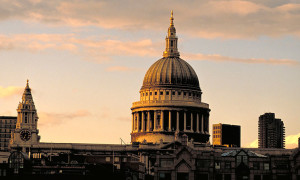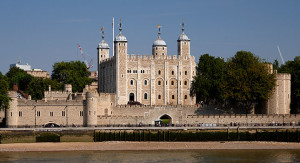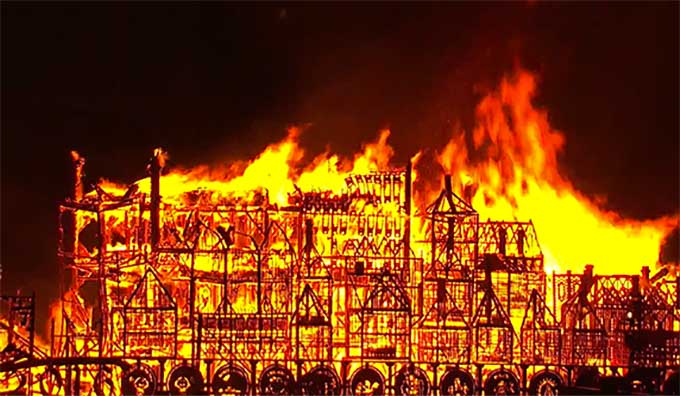The Great Fire of London raged for three days in 1666, leaving Britain’s trade hub and governing city in ruins. But how much do you know about those dramatic days? Here are our top Great Fire of London facts…
The blaze of 1666 was neither first nor the last fire to strike the capital but the Great Fire of London was one of the most devastating events in the city’s history. Raging from 1am on Sunday 2 September to dawn on Wednesday 5 September, it resulted in four-fifths of the City being destroyed, including 13,200 houses and 87 churches. Miraculously, there were only six officially recorded deaths, but the very hub of Britain’s trade, government and prosperity stood in ruins.
Here, we dig up some of the lesser-known facts about the fire that brought London to its knees.
Great Fire of London facts
1. Rapid spread
At the time London was an urban sprawl mainly made up of wooden buildings, tightly packed together along very narrow streets. Fires were common in a time when every home had open fires and lit by naked flame. What made this fire different was the long, hot summer that preceded it and a strong easterly wind, which created the perfect conditions for a rapid spread.

2. Baker’s House
The fire started in the Pudding Lane house of baker Thomas Farriner. His manservant discovered the blaze and roused Farriner, his daughter Hanna and their maid. Most of them clambered to safety out of an upstairs window and into their neighbour’s bedchamber. Only the maid failed to escape. She became the first victim of the Great Fire of London; no one even knows her name.
3. Fight or flight
Londoners had to choose whether to help the fire-fighting or rescue goods from their houses. Most rescued as many of their belongings as they could carry, fled to the river, and tried to load their goods onto boats to get away to safety.
4. Escape
Others rushed through the City gates to the fields outside London. They stayed there for many days, sheltering in tents and shacks. Some people were forced to live in this way for months and even years.
5. Fire-fighting
There was no fire brigade in 1666 so Londoners had to fight the fire themselves, helped by local soldiers. Fire Posts, each staffed by 130 men, were set up around the City to fight the blaze.
6. Gunpowder
The best way to stop the fire was to pull down houses with fire hooks to make gaps that would act as ‘fire breaks’. An even better way was to blow up the house with gunpowder, but this wasn’t done until the third day of the fire.

7. Tower of London
When the Tower of London was threatened, orders were given for extra fire engines to be sent to prevent its destruction. Many of London’s wealthiest citizens had taken their money and valuables to the Tower for safekeeping.
8. Scorching
In 1979 archaeologists excavated the remains of a burnt-out shop on Pudding Lane. They found melted pieces of pottery, which show that the temperature of the fire was as high as 1,700C.
9. London destroyed
436 acres of London were destroyed, including 13,200 houses and 87 churches including, of course St Paul’s Cathedral. Some places smouldered for months, and it took nearly 50 years to rebuild. Construction of the new St Paul’s Cathedral began in 1675 and didn’t open until 1708.
10. Plague rampages on
The Great Fire did not stop the Great Plague of 1665. The plague affected a much larger area than the part destroyed in the fire. Fewer than 10 people are recorded as dying in the Great Fire, far less than the number that would have died from the plague if the fire had not happened.
Read more:
London Terraces: The best restaurants and bars to eat alfresco






 © 2024
© 2024